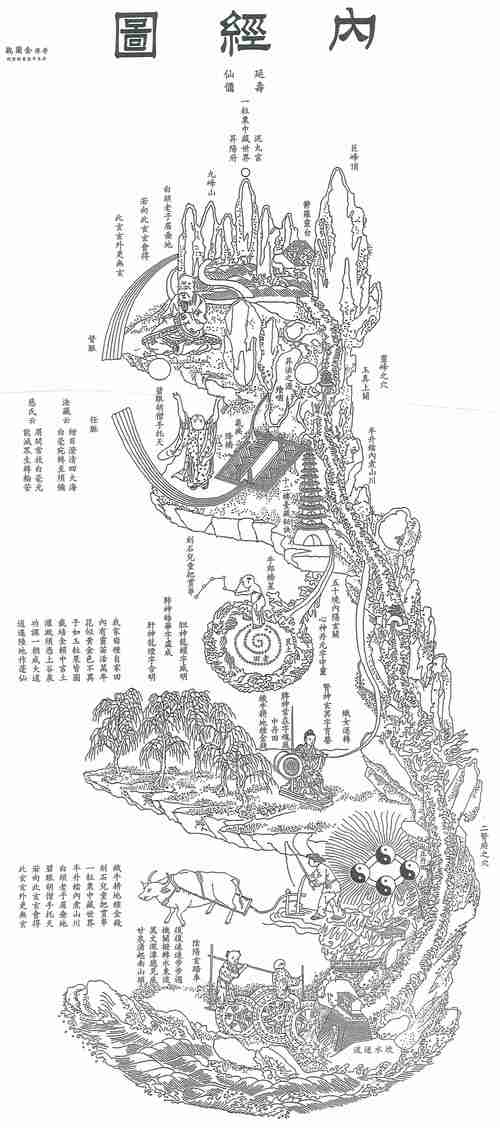Envisioning the Body as Vessel of World and Cosmos
Daoism is one of China’s most powerful religions of indigenous origins. As part of their practices, Daoist groups have over time developed and utilized an important type of representation—the map or chart (tu 圖) of the body—in which they depict the human body microcosmically and containing of an inner landscape. These charts represent the body as regulated by an elaborate system of internal processes both connected to, and resonating with the natural world. They are known as “alchemical maps” of the human body because they correlate with internal alchemy (neidan 內丹), a revolutionary development that flourished during China’s medieval period.
Alchemy is a science involving the transformation of metals into gold in an attempt to discover an elixir of life, and it has been practiced in various cultures around the world throughout history. In Daoism, however, alchemy has focused not only on the transformation of metals, but on the physical, mechanical and biochemical structure of the human body. It is therefore often referred to as “physiological alchemy.” Envisioning the internal space of the human body as both natural and cosmic landscapes became integral to visualization practices of Daoism.
The White Cloud Abbey (Baiyun guan 白雲觀) in Beijing is one of the most important sites of Chinese Daoism today, holding among its collection perhaps the most well-known body chart in China. Depicting sacred alchemical maps of the human body, this chart is found on a nineteenth-century stone stele and is known as the Diagram of Internal Pathways (Neijing tu 內經圖) [shown below].
Many Daoist practitioners and academic scholars have studied this diagram. The primary purpose of the representation is to teach practitioners how they can mystically transform their bodies and transcend death.[1]
The primary purpose of this diagram is not related to pregnancy. However, my own anecdotal evidence shows that it might be used to aid pregnant women, helping them to visualize an entire inner landscape or cosmos within their bodies. During my first pregnancy, I had a very large copy of this diagram hanging from one wall of my apartment. As my pregnancy progressed, I would look at the details of the chart every day, imagining that my own body also encompassed a microcosmic landscape, complete with mountains along the crown of my head, forests and fertile farming land at my core, and waterways coursing down my spine towards an ocean below. The purity of this internal world, I imagined, also protected the baby inside of me.
At over four hours long, the last phase of my labor (pushing) was quite arduous. Eventually, through long breaths, I began envisioning the internal world of mountains and streams inside of my body, and I finally imagined my baby flowing along the stream of my own birth path towards the widening mouth of my body’s river. Amazing progress and opening of my body then happened quickly, and in short time, my son emerged peacefully and was born calmly into the world.
I believe that the visualization of such internal landscapes as the Diagram of Internal Pathways represented here have the capacity to provide other pregnant women with powerful tools through which they can utilize imagery and imagination in the birthing of their own children.
[1] Dr. Louis Komjathy discusses this in his article, “Mapping The Daoist Body: Part Two – The Text of the Neijing tu” in the Journal of Daoist Studies, vol. 2 (2009), 64-108.

Beautiful evocation of the maternal body as axis mundi of the world.